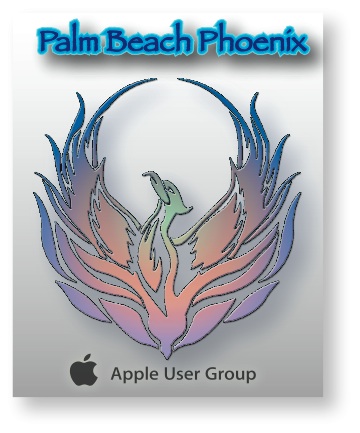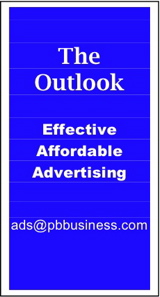Mac Corner: Why the iPhone is so important
By Larry Grinnell, Palm Beach Phoenix Apple Users Group
 It’s hardly a big news item that Apple’s iPhone is a huge success in the marketplace. From the original product announcement in January 2007, there’s hardly been a day that this groundbreaking product has not been in the news, for better or worse.
It’s hardly a big news item that Apple’s iPhone is a huge success in the marketplace. From the original product announcement in January 2007, there’s hardly been a day that this groundbreaking product has not been in the news, for better or worse.
There had been devices known as “smartphones” before, but all were seriously flawed in one way or another: slow, clunky user interfaces, unstable, low battery life, tiny keyboards, and more. In spite of those issues, devices running operating systems like Blackberry, Windows Mobile, Symbian, PalmOS, etc., sold like crazy, and untethered busy people from their desks and their desktop or laptop computers.
Sure, they hated them, much like they hated their cell phones and their carriers, but for many, smartphones rapidly became a vital part of their daily lives.
What was the difference? In a word, applications. Cellphones with their tiny screens and diabolically awful web browsers made it nearly impossible to do much more with them than to make phone calls.
The addition of applications and QWERTY-style keyboards made it possible for busy businesspeople to manage on the run. Smartphones made it possible to connect to office email systems and with appropriate security software, lets users log into their office network, enabling rapid access to important documents and web-based applications from anywhere in the world.
Speaking of the web, these larger devices with graphic user interfaces, conventional keyboards, and traditional web browsing software were the final pieces to the puzzle leading to convergence: tying telephony, email, web browsing, and running many office-style applications, all in one device. The rapidly decreasing costs of flash memory, as well as improved performance and lower power consumption in new generations of processors made it possible to bring these converged elements into a small, battery-operated device with processing power rivaling that found in laptop and desktop personal computers.
Enter Apple Inc. It seems clear that Steve Jobs and members of his brain trust were watching the developments in smartphone technology, and knew that semiconductor technology would continue to improve performance, reduce size, and reduce cost at a fairly predictable rate. When all of these elements converged, Jobs knew he had the necessary pieces to create a product that would redefine the device known as the smartphone. What Apple did was take their stable, powerful operating system, OS X (pronounced Oh-Ess-Ten), whose foundation is the proven Unix operating system, pared it down to the essentials, and put it into a mobile device.
In effect, they created a personal computer that could be held in the palm of your hand that also happened to be a telephone … oh, and it’s an iPod, too!
Because this new device, the iPhone, is a small personal computer, it’s possible to design powerful applications to extend the functionality of the device. Apple already had a superior distribution system known as the iTunes Store, where it was possible to download music and video files. They added the App Store to the iTunes Store, where developers post their software products, and post they do!
The App Store was the real game changer. By providing an easy, single point of entry, users know exactly where to go to get the applications they want, using the familiar iTunes program to download and install the apps.
In the 2-1/2 years since the iPhone has been available, tens of thousands of applications have been posted to the App Store, with everything from games to business programs to music to silly things like collections of fart noises. Prices range from free to hundreds of dollars, but most are a buck or two.
Apple’s business partner in all of this is AT&T, with whom they signed a multi-year exclusive contract. This hasn’t exactly endeared them with customers of other carriers who would like to have their own iPhone but can’t or don’t want to get out of their contracts with their current carriers. Officials at the FCC and other agencies are discussing the whole idea of long-term exclusives as possibly being anti-competitive.
That aside, the Apple iPhone has changed all the rules, transforming the humble smartphone into a platform that will likely spawn many interesting new devices in the coming months and years. It won’t be all that far away when, for most people, the laptop and desktop computer will go the way of the dinosaur, and in their places will be more interesting converged devices.
Most users need their computer for web browsing, emailing, watching movies, wordprocessing, and so on. You don’t need a big, powerful desktop or laptop machine for this. A device somewhat larger than an iPhone, like a tablet computer, may just meet the needs of a large number of computer users. Rumors have been flying about a new Apple tablet computer. I think it’s even money whether it will be a conventional Macintosh, or an enhanced iPhone. I lean toward the latter.
EDITOR'S NOTE: Readers are welcome to comment on this or any Mac Corner columns by visiting the Palm Beach Phoenix blog as well as by writing the editor of Palm Beach Business.com.
Mac Corner runs every Wednesday only in Palm Beach Business.com. Click to read the previous column.
About Larry Grinnell: Larry has been working with Macintosh and Windows PCs for over 25 years and worked as a senior technical writer and IT support professional for a major midwest-based consumer electronics and telecommunications equipment manufacturer here in South Florida. His musings on a wide variety of topics from computers to jazz guitar to strange foreign cars from the 1950s can be viewed at the MyMac.com website. Click here to reach him by email.
 Writers of this column are members of the Palm Beach Phoenix Apple User Group, a nonprofit organization for Apple Computing Device Users, recognized by Apple Inc., with the purpose of providing educational training and coaching to its members (students, professionals and seniors alike) in a cordial social environment. The club meets the second Saturday (1-4 p.m.) and fourth Wednesday (6-8 p.m.) of each month at the Fire Station #2, 4301 Dixie Highway in West Palm Beach (just two block south of Southern Boulevard). Click here to visit their website. Click here to reach them by email.
Writers of this column are members of the Palm Beach Phoenix Apple User Group, a nonprofit organization for Apple Computing Device Users, recognized by Apple Inc., with the purpose of providing educational training and coaching to its members (students, professionals and seniors alike) in a cordial social environment. The club meets the second Saturday (1-4 p.m.) and fourth Wednesday (6-8 p.m.) of each month at the Fire Station #2, 4301 Dixie Highway in West Palm Beach (just two block south of Southern Boulevard). Click here to visit their website. Click here to reach them by email.



